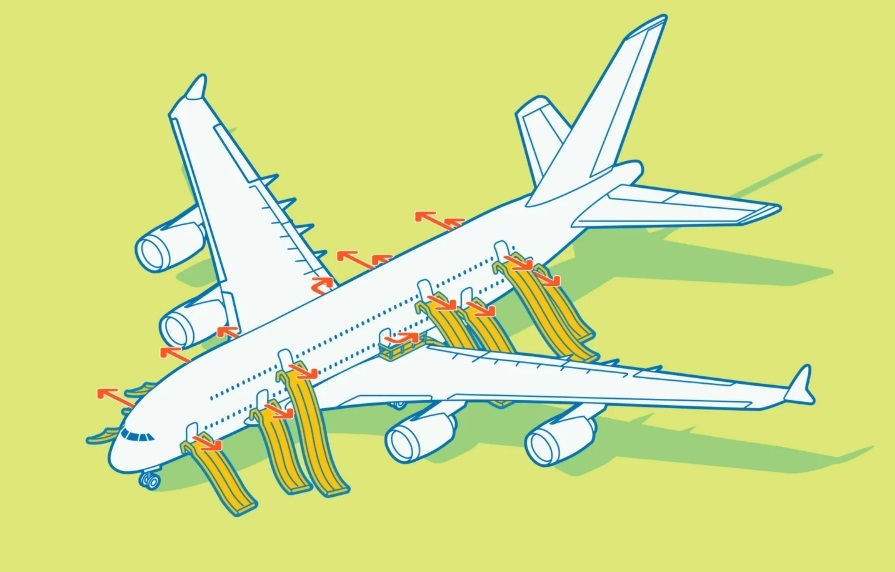Last week, a video of an emergency evacuation on an American Airlines flight landing in Denver (USA) after a landing gear malfunction went viral.
The video showed many passengers carrying luggage as they exited via the emergency slides. This prompted aviation safety experts to question why people didn't leave their belongings behind, as advised and repeatedly instructed.
Valerie Fraser, a flight attendant with JetBlue, said that in emergencies, every second is precious, especially if the cabin is filled with smoke. "Just 5 seconds to grab a bag can take away someone else's chance of survival," Fraser said.
According to her, many casualties occur not because of fire or explosions, but due to delays in evacuation.
"We always emphasize during the safety briefing: in case of emergency, leave everything behind. It's a rule for a reason," Valerie said.
 |
Illustrative image: Huffpost |
Illustrative image: Huffpost
Luggage not only slows down the evacuation process but can also damage rescue equipment or become dangerous obstacles. "Bags can tear the slides, block exits, and even trip people," said a domestic flight attendant named Andy L.
In the American Airlines video, one passenger was carrying a small child in one arm and luggage in the other. He lost his balance and fell on the child, an accident that could have been entirely avoided if his other arm had been free.
"You might think grabbing your wallet, phone, or medication is important, but none of those things are more valuable than your life or the lives of others," Fraser emphasized.
She also stated that if necessary, medical personnel will have first aid supplies available, and lost luggage will be returned by the airline if the situation allows.
The only exception is for passengers traveling with pets, in which case, they should bring their pets with them.
According to Cora C., a flight attendant with 7 years of experience, flight crews are trained to evacuate an entire aircraft in 90 seconds or less, even with only half the exits functioning.
"In some situations, such as a cabin fire, the entire aircraft can be engulfed in smoke in those same 90 seconds," Cora said. If passengers don't follow the "leave everything behind" order, the crew can't guarantee a safe evacuation.
In reality, many evacuations are carried out as a precaution, without immediate danger to life. However, the risk can escalate quickly if passengers panic or act incorrectly.
"The best thing you can do is stay calm, follow the flight attendants' instructions, and move quickly," Andy said.
"We are trained to protect you, but you also have to cooperate to protect yourself."
Nhat Minh (According to Huffpost)












